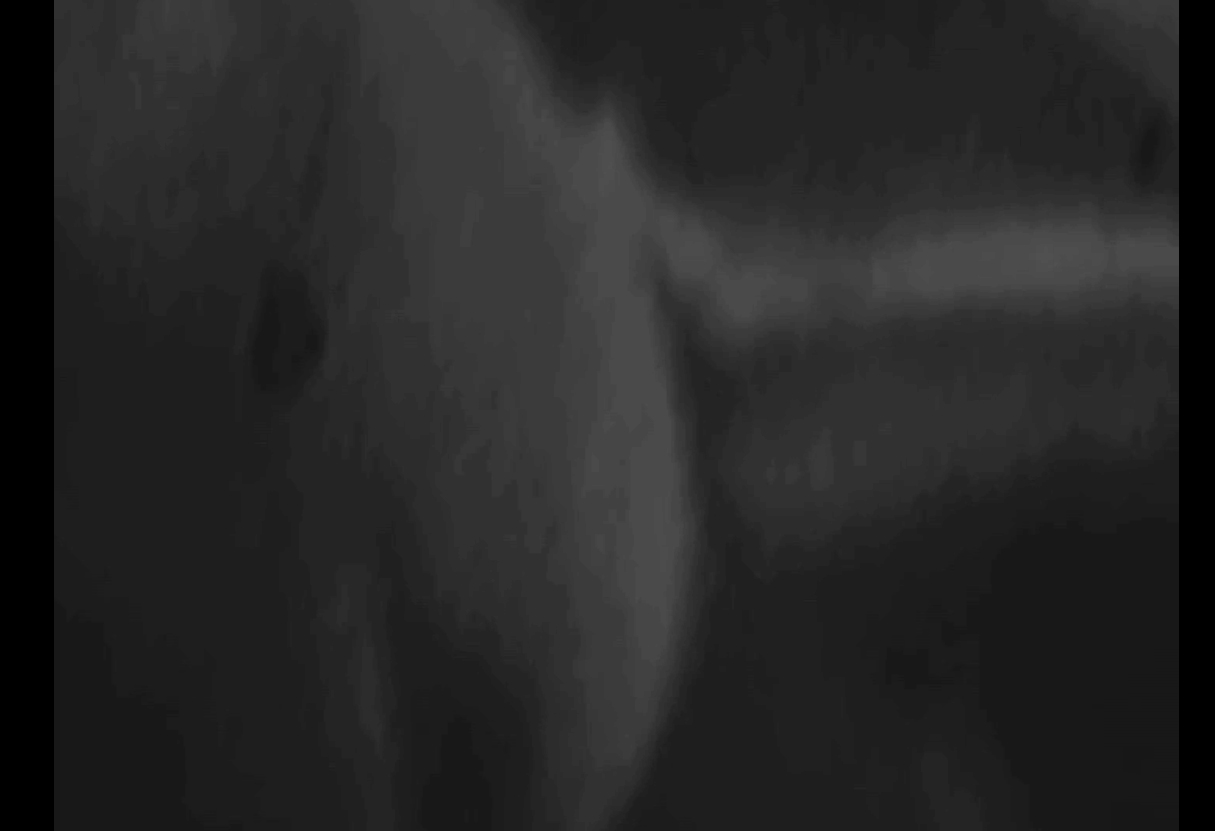
THE TAILING

|
The calligraphy of the title frame has a distinctly Gothic flourish, and John Duncan taps deeper into that culturally overplayed yet still potent and potentially transgressive tradition as The TAILING unfurls. It's a 38 minute video work with musical accompaniment improvised by Duncan on Hammond organ; an unresolved greyscale enigma with sepulchral soundtrack. The music proceeds at a stealthy pace: a concatenation of quivering feline purrs, muted cathedral chording, a hovering dissonant drone, fluttery tremolo. Coming together in the course of The TAILING, these sounds seem encoded with unease: sonic props for an unsettling psychodrama. Duncan in communion, perhaps, with the distressed spirit of Edgar Allen Poe. On the screen, images remain indistinct, slippery traces of continual, obscure and slightly stilted motion. At times facial features are discernable, although bordering on abstraction. There's a suggestion, now and again, of hands moving -- Duncan's, perhaps, at the keyboard [think again]. But the definition is too evasive to deliver any certainty and the grainy monochrome slips into other frames of suggestiveness -- glandular and erotic: subterranean and menacing; lunar and uncharted; nocturnal and alien. The title itself seems evocative without providing any steady clue or helpful illumination. It's a work that cries out to be experienced in surrounding darkness. Detached from the familiar and confronted with The TAILING's murky tropisms, you'll find that you are not sure what you are watching, but in the best Gothic tradition you may start to feel that somehow, unsettlingly, it does know you. -- Julian Cowley, THE WIRE, February 2011 A 38-minute, cryptic-as-ever offer by Duncan. The frazzled slow motion of the black and white picture offers inconspicuous flashes of pornographic/S&M action interspersed with short pauses where everything is drowned in darkness. One distinguishes very little on a first stab but, already at the second, glimpses of male masturbation and bondage practices emerge amidst the film's fuzzy shadows. The music was totally improvised on the Hammond, its constitutive temperament that of a soundtrack for an ambiguous liturgy. Semi-dissonant harmonic transitions suffused with sinister inscrutability get scarred three/four times by the abrupt entrance of a permanent droning fluctuation acting like a stubborn interference, the ears congested by oscillating waves until things regress to the initial morbid murkiness. The last minutes are underlined by the progressive increase of the picture's unintelligibility, accompanied by a swelling of the organ clusters' puissance. Duncan's attraction towards the aspects of our psyche that we usually prefer to keep hidden away is well-documented; in this circumstance, his approach to the matter seems to be carried out through a symbolization of the incommunicable metaphors deriving from the meeting of sexual fantasy and sleep/intoxication, the whole leaving us speechlessly perplexed once more. -- Massimo Ricci, Touching Extremes 25 December, 2012 |